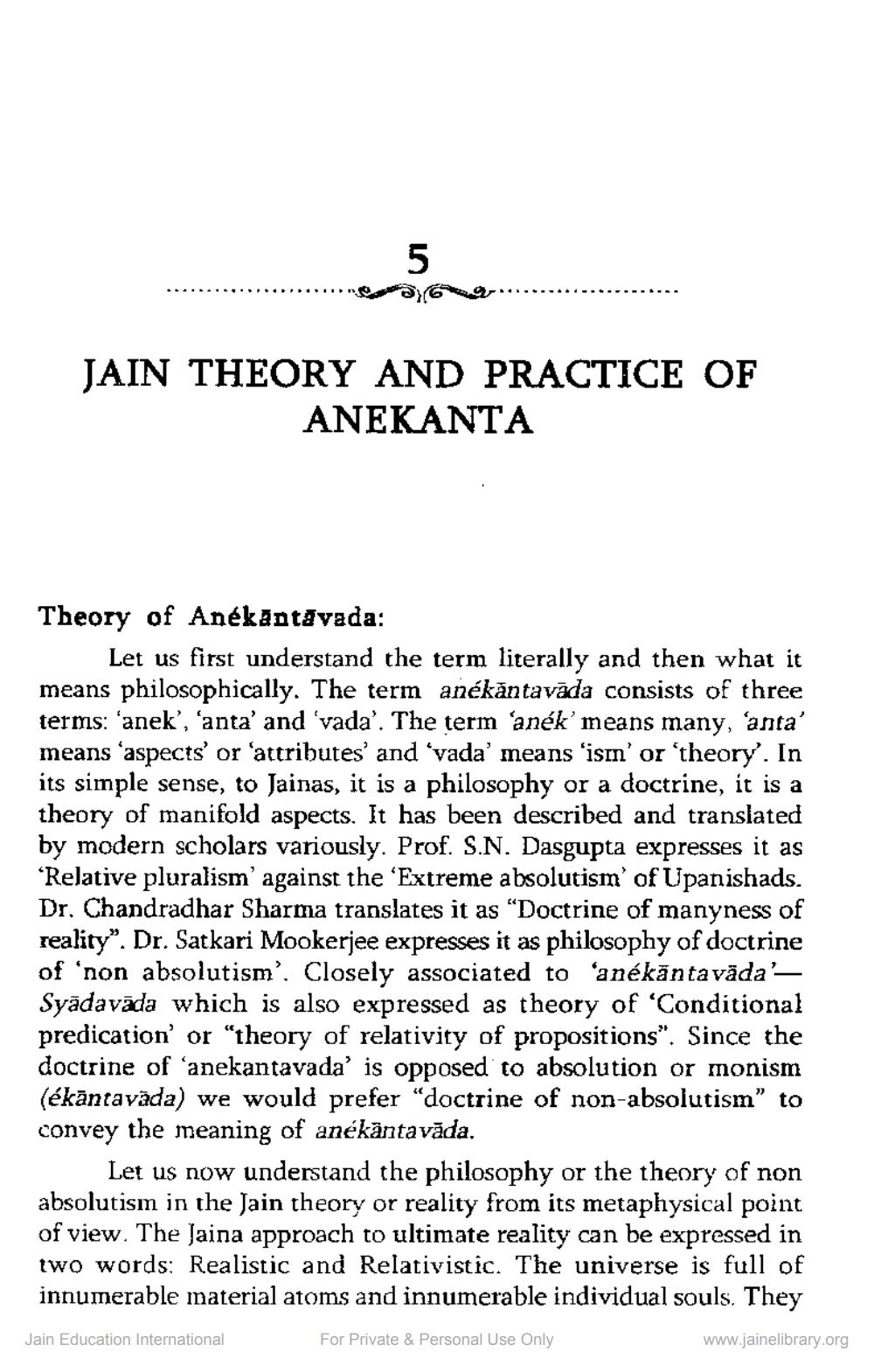Book Title: Jain Theory and Practice of Anekanta Author(s): Hemant Shah Publisher: Z_Gems_of_Jainism_001803.pdf View full book textPage 1
________________ JAIN THEORY AND PRACTICE OF ANEKANTA Theory of Anekantăvada: Let us first understand the term literally and then what it means philosophically. The term anékāntavāda consists of three terms: 'anek', 'anta' and 'vada'. The term 'anék' means many, anta means 'aspects' or 'attributes' and 'vada' means 'isin' or 'theory'. In its simple sense, to Jainas, it is a philosophy or a doctrine, it is a theory of manifold aspects. It has been described and translated by modern scholars variously. Prof. S.N. Dasgupta expresses it as “Relative pluralism' against the 'Extreme absolutism' of Upanishads. Dr. Chandradhar Sharma translates it as “Doctrine of manyness of reality". Dr. Satkari Mookerjee expresses it as philosophy of doctrine of ‘non absolutism'. Closely associated to anékāntavāda'Syādavāda which is also expressed as theory of 'Conditional predication' or “theory of relativity of propositions". Since the doctrine of 'anekantavada' is opposed to absolution or monism (ékāntavāda) we would prefer "doctrine of non-absolutism" to convey the meaning of anékāntavāda. Let us now understand the philosophy or the theory of non absolutism in the Jain theory or reality from its metaphysical point of view. The Jaina approach to ultimate reality can be expressed in two words: Realistic and Relativistic. The universe is full of innumerable material atoms and innumerable individual souls. They Jain Education International For Private & Personal Use Only www.jainelibrary.orgPage Navigation
1 2 3 4 5 6 7 8 9 10 11 12 ... 16
